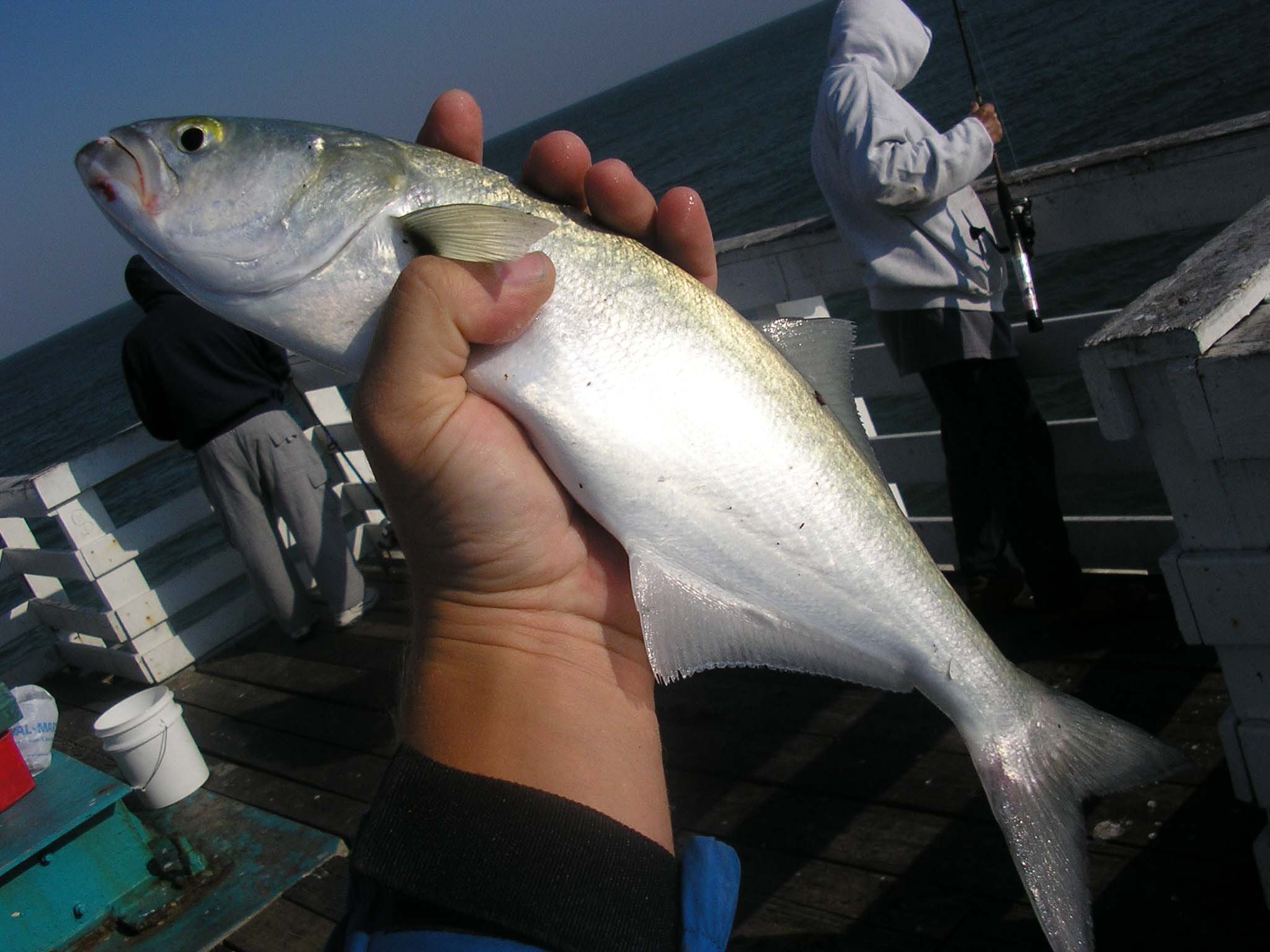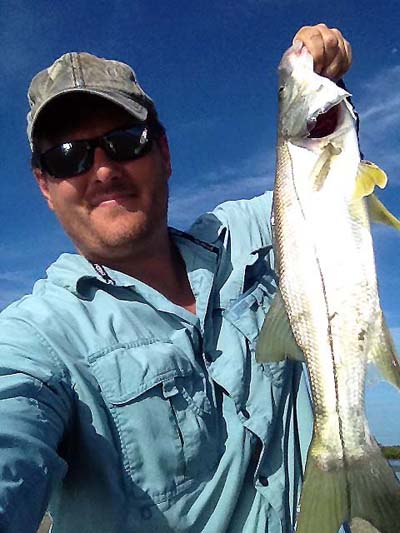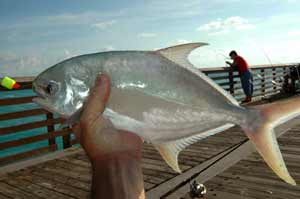The name Bluefish comes from the blue hue found on the top of their bodies. They are a sleek, flat sided fish with a forked tail that average 1-2 pounds in shore with a world record size of 31 lbs 12oz.
Where to Find Inshore Bluefish
Inshore bluefish are most commonly found along the surf zone. Because they are pelagic fish they move along the coast following their preferred water temperatures of 66-72 degrees. Bluefish are often found by looking for large schools of bait being thrashed or birds circling and feeding on the bait chased up by the toothy predators.
The best places to find inshore bluefish include:
- Coastal Waters
- Frequently found near structure
- Areas with current that attract bait will also attract bluefish
- Inlets
- Passes
- Inshore Creeks and Flats (though less common)
Gear
While the forked tail and flat shape of a Bluefish give them great strength for their size the average inshore fish is only around 1-2 lbs, so most gear that is saltwater rated will work well. Inshore, these fish have been caught on everything from a "Barbie" spin caster to full size conventional gear, but for the best action, picking gear that is appropriate to the targeted fish works best.
Reels
The most popular types of reals are spinning reels as bait casting. Any reel that can hold 8 to 12 pound test line will work great for bluefish.
Rods
The main consideration when picking a rod when targeting bluefish is casting distance. In general a longer rod equals longer casting distance. When fishing from piers, docks, bridges or other such structure a medium powered rod with a fast action tip of about 7 foot in length is recommended. If fishing from the surf, a much longer rod may be needed to get the distance needed to reach the fish.
Line
Main Line
Bluefish have a mouth full of razor sharp teeth that can slice through most conventional fishing line so a leader is always recommended. For the main line, 8-12lb test line will have enough strength to land almost any inshore bluefish and will be thin enough to allow for longer casts. Since a leader is always recommended, braided line is recommended for spinning reels and monofiliment is recommended for baitcasting reels (although braid can be used on baticasting as well if you are proficient in its use)
Leader
The type of leader depends on the type of fishing you plan on doing. If you are going to be using live bait, a very light metal leader is recommended. The bluefish eat very aggressively and will often get the bait all the way in their mouth allowing their teeth to cut any conventional line. If fishing with artificial baits, a 20 lb test fluorocarbon leader is recommended if using a fast moving lure and a very light metal lure if using a slower lure.
Live Bait
Because of their voracious appetite, bluefish have been caught on all types of live bait, but there are a few that will out preform most others. Any type of live bait fish that has a flashy color and actively moves through the water works well. Some great examples are:
- Finger Mullet
- Scaled Sardines
- Very Small Pinfish
Other popular live baits such as Live Shrimp will work as well when the fish are feeding heavily. Frozen and cut bait will also work, just not as well as live bait that is actively swimming.
Lures
Bluefish are one of the easier fish to catch on lures inshore. The are really only two requirements, a fast moving lure and a lure that is flashy in color.
When throwing a lure, make sure the retrieve is rapid and erratic. The speed and erratic movement will catch the eye of the fish and cause it to instinctively strike. They are such voracious predators that it is not uncommon to catch more than one fish on a lure that has multiple hooks.
Some recommended lures are:
- Gotcha Jerk Plug
- Silver or Gold Spoon
- Kastmaster spoon
- Johnson's Gold Spoon
When selecting a lure for bluefish keep their mouthful of razor sharp teeth in mind. You do not want to be using a very expensive plug or soft plastics as the bluefish will quickly destroy them.
Techniques
When bluefish are actively feeding the only technique that matters is to get the bait or lure near them and there is a good chance you will hook into one. When they are less aggressive here are a few techniques that work well:
- Locate a school of bait fish and work the edges. Bluefish, even when not activly feeding will have a hard time turning down a wounded fish from a school of bait.
- Chum the waters with live or cut bait. The smell will get the fish excited to feed.'
- The more erratic a retrieval can be the better. The erratic movements will trigger the bluefishes natural predatory instinct.
Tips and Tricks
- The lighter the wire leader the better, almost any wire leader will be strong enough to catch a bluefish, so keep the size down to minimize its visibility.
- If you are going to harvest the bluefish be sure to bleed it immediately to improve flavor. (Check your local regulations before harvesting).
- Large bluefish are rare in the south, but from time to time there is a large fish run. If you catch one, there are probably more nearby!





